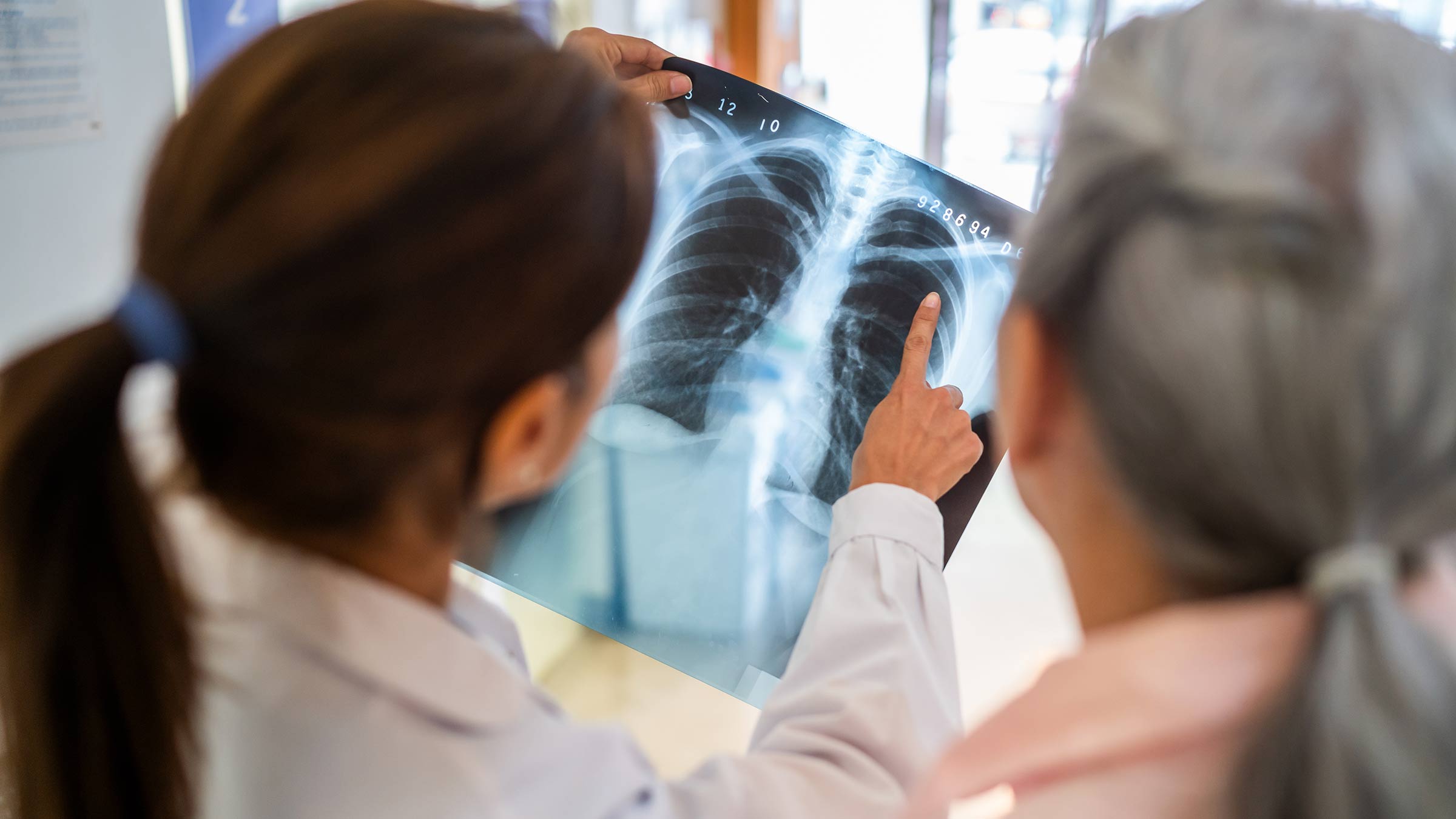What to know about lung nodules
Lung nodules are common and often benign, but early evaluation is important for detecting lung cancer at a stage when it’s most treatable.
Lung nodules are small, abnormal growths that develop in the lungs. They may be round or irregular in shape. These pulmonary nodules are very common and are usually benign (non-cancerous). However, it’s essential to evaluate them, because they can occasionally be an early-stage lung cancer. When caught early, lung cancer is more treatable.
Lung nodules may develop due to:
- Inflammatory conditions, including sarcoidosis or rheumatoid arthritis
- Infections, such as tuberculosis or histoplasmosis (past or present)
- Scar tissue
- Environmental exposures, such as tobacco smoke, asbestos, radon or inhaled dust and fumes
- Cancer, especially in individuals with a history of smoking or radon exposure
Most lung nodules don’t cause symptoms as they are small in size. However, if a nodule is located near a large airway, it may cause coughing, mild bleeding or shortness of breath.
How are lung nodules diagnosed?
Lung nodules are often discovered incidentally during imaging studies — such as a chest X-ray or CT scan — performed for other reasons. They can also be detected during routine lung cancer screening or pre-surgical evaluations.
If a nodule looks concerning for cancer, your physician will start with a thorough review of your medical history, including risk factors, exposures and any prior illnesses. A physical exam will follow. Based on these findings, additional diagnostic tests may be recommended.
Depending on the size, shape and location of the nodule, these may include:
- CT scan
- PET scan
- Biopsy
- Bronchoscopy
- Pulmonary function tests
- Surgical evaluation
For nodules that are growing or appear suspicious, a PET scan may be used to assess metabolic activity and help determine if cancer is likely. If cancer is suspected, a biopsy is usually needed for confirmation. This involves removing tissue or cells so a pathologist can examine them under a microscope.
One of the minimally invasive options available is robotic bronchoscopy. This cutting-edge technique allows physicians to biopsy deep areas of the lung with high precision through the mouth or nose, without making an incision.
If the nodule is small (less than 6 millimeters) and your overall risk for lung cancer is low, your doctor may recommend routine follow-up rather than immediate further testing.
For more complex cases or when additional evaluation is needed, you may be referred to the Lung Nodule Clinic at The Ohio State University Comprehensive Cancer Center – Arthur G. James Cancer Hospital and Richard J. Solove Research Institute (OSUCCC – James).
How are lung nodules treated?
There’s no one-size-fits-all treatment for lung nodules. Most benign nodules don’t require treatment unless they’re linked to an active infection (such as histoplasmosis) or an inflammatory disease (like sarcoidosis or rheumatoid arthritis). In these cases, appropriate medical treatment will be discussed with you.
If a nodule is suspected to be or confirmed as cancer, your care team may recommend one or more of these options:
- Surgery, including:
- Wedge resection — Removal of the nodule and a small portion of surrounding lung
- Segmentectomy — Removal of the lung segment containing the nodule
- Lobectomy — Removal of the entire lobe if cancer is present
- Radiation therapy — High-energy beams used to kill cancer cells
- Targeted therapy — Medications that target specific cancer cell mutations
- Immunotherapy — Boosts your immune system to fight cancer more effectively
- Chemotherapy — Drugs administered orally or by an IV to kill cancer cells throughout the body
For some patients with early-stage lung cancer who are not surgical candidates or prefer nonsurgical treatment, radiation therapy alone may be an effective option.
Why choose Ohio State for lung nodule care?
The Lung Nodule Clinic at the OSUCCC – James is the only comprehensive clinic of its kind in central Ohio. It features a multidisciplinary team — including pulmonologists, thoracic surgeons, oncologists, radiologists and radiation oncologists — who collaborate weekly to review patient cases.
This means that by the time a patient arrives at our clinic, we’ve already carefully reviewed their imaging and clinical information and created a preliminary treatment plan. We then work closely with the patient to personalize that plan as needed.
Patients at Ohio State also benefit from access to innovative treatments and clinical trials, many of which are not widely available elsewhere in the country.
Lung nodule research and clinical trials at Ohio State
The OSUCCC – James is a national leader in lung cancer research, with several ongoing clinical trials and research initiatives focused on lung nodules. Examples include:
- Biomarker development — Using blood tests or nasal swabs to help determine whether a lung nodule is benign or cancerous
- Technological innovations — Improving biopsy tools and imaging to enhance diagnostic accuracy
- Program outcomes research — Tracking detection rates and treatment results to optimize patient care

Take charge of your lung health
Ohio State offers comprehensive treatments for lung conditions that help you breathe easier.
Learn more








